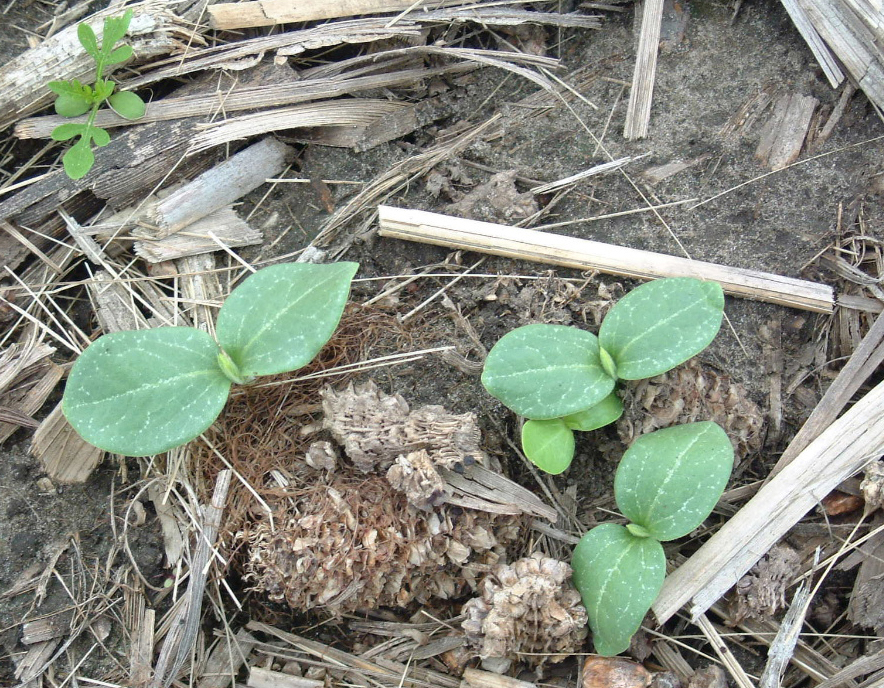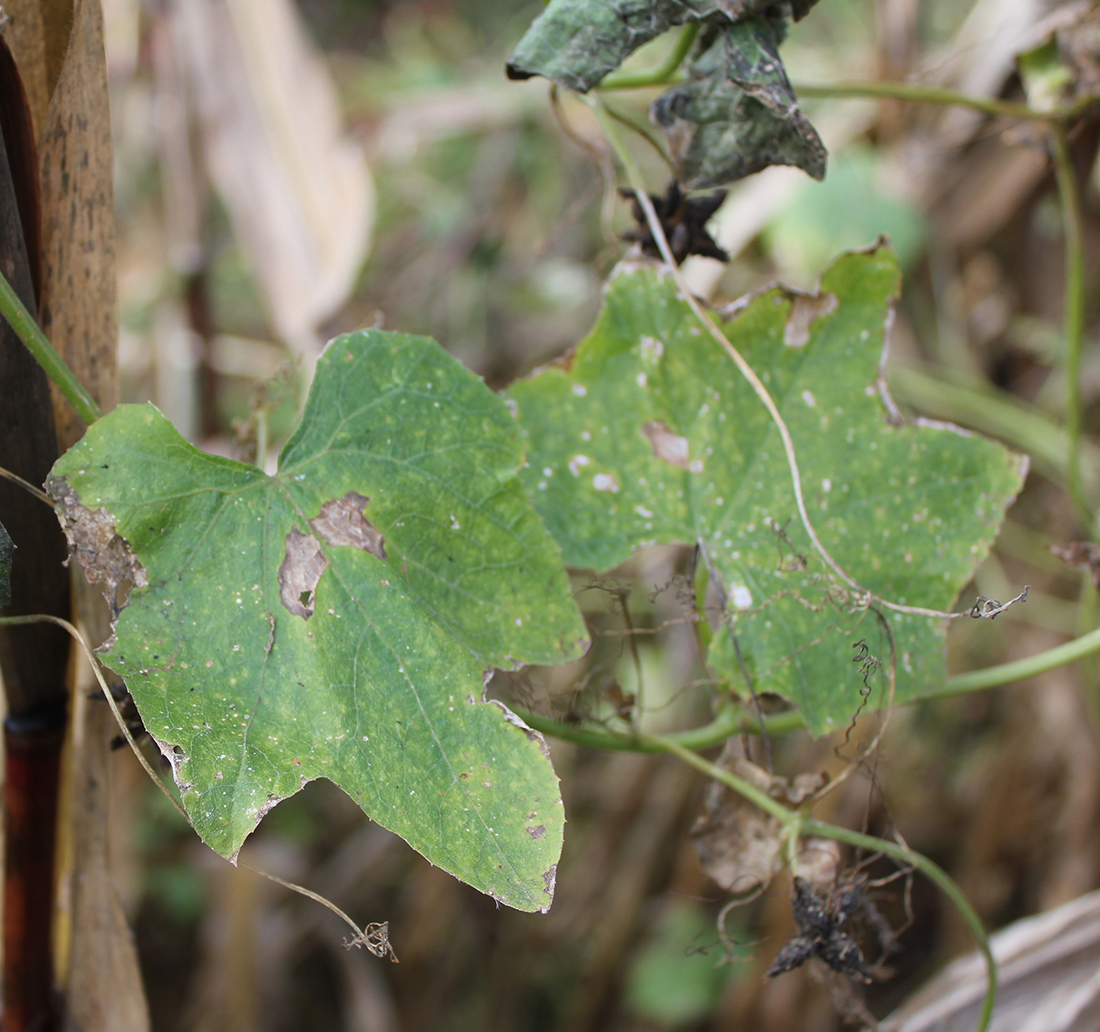Bur Cucumber
- Gourd or Melon (Cucurbitaceae family):
- Sicyos angulatus L.
- EPPO code:
- SIYAN
- Other names:
- Burr cucumber, star cucumber
Species information
- Lifecycle:
- Annual.
- Propagation:
- Reproduces by seed
- Emergence:
- Bur cucumber will emerge from May to August, but the majority of seedlings will emerge in June. It is considered a later emerging annual weed.
- Habitat:
- Bur cucumber is native to North America. It prefers damp soil and is most commonly found in low-lying areas near rivers and creeks.
- Competitiveness:
- The species is very competitive. Its creeping, vine-like nature causes significant reductions in crop harvesting efficiency.
Identification clues
Seedling
- Cotyledons:
- Thick and oblong or spoon shaped, bur cucumber cotyledons resemble ordinary cucumber cotyledons and are covered in spreading hairs.
- Mature leaves:
- Mature leaves have alternate leaf orientation. They are broad and heart shaped, have toothed margins, and 3–5 points or shallow lobes. The upper surface of each leaf is light green and hairy. Stems attach in the narrow space between the lobes of the heart-shaped leaf base.
Mature plant
- Stem:
- Vine-like stems climb over vegetation and fences or sprawl across the ground using branched tendrils, similar to those found on pea plants. The stems are light green, round or furrowed, quite hairy, and have a sticky surface.
- Flowers:
- Bur cucumber has both male and female flowers, which are bunched together in short clusters of 3–10 flowers (raceme) on the same plant. Male flowers have green calyx with five teeth, white petals with five spreading lobes, and bloom in clusters towards the end of the raceme. Female flowers have a large ovary, which is enclosed within an ovoid fruit. The fruit is covered with sharp spines and long white hairs that are initially green, but later turn brown. Bur cucumber blooms from late summer to early fall.
- Fruit:
- Growing in clusters of 3–20, the fruit of bur cucumber resemble very small cucumbers that are more round than regular cucumber-shaped and covered in long bristles. The burr- like fruit contain a single, large seed that is brown and flat.
- Roots:
- Shallow, fibrous and branched taproot.
Often mistaken for
I know it's not Wild cucumber because wild cucumber has leaves that are more deeply lobed and “star shaped.” Its stems are usually smooth, and it flowers with six rather than five petals and sepals.





Updated: January 13, 2023
Published: January 13, 2023